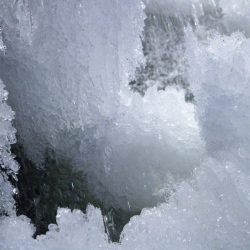
The Earth’s orbit, while a concept that is light-years away, is hitting close to home, affecting the stability of Eastern Antarctic ice caps, according to a new study. Sea levels in Antarctica are rising or falling by as much as dozens of meters due to simple changes in the Earth’s orbit around the Sun.
Analyses of seabed sediments dating back 2.2 to 4.3 million years ago show that natural climatic processes are causing polar ice caps to respond more and more to slight changes in our planet’s orbit.
What’s more, 2.5 million years ago when the concentration of carbon dioxide in the atmosphere was akin to today’s levels, the thawing of the eastern Antarctic ice cap was a generalized process.
According to the report in the journal Nature Geoscience, the presence of sea ice in the oceans that surround Antarctica are driving this process. Sea ice is a layer of frozen seawater that creates a protective shield around the continent and the Antarctic ice caps. However, it’s sensitive to warming temperatures that are the result of greenhouse gas emissions in the atmosphere.
"The disappearance of this protective shield allowed oceanic currents pushed by the winds to penetrate down to the base of the ice caps, provoking their thaw," Carlota Escutia, a researcher at the Andalusian Institute of Earth Sciences, who led the study, said in a statement.
"The disappearance of this sea ice can result in the melting of the ice caps and in the increase of sea level by several meters," he added.
